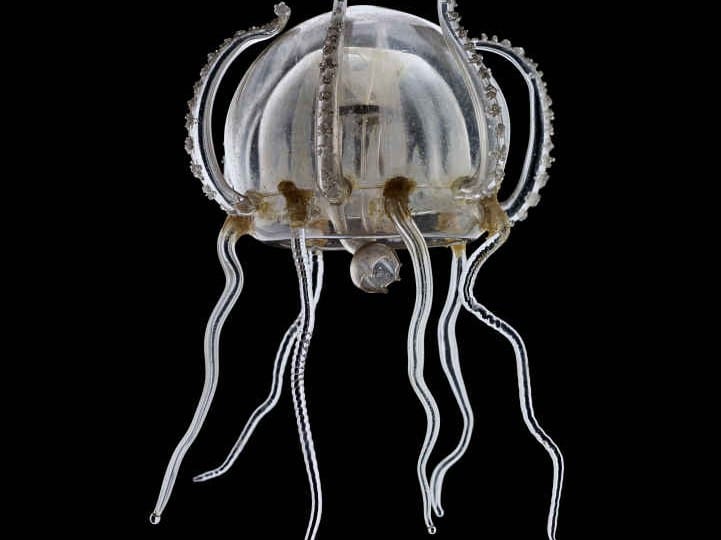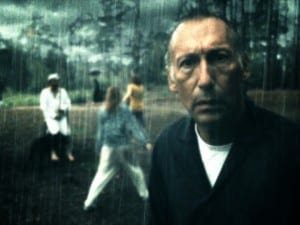Opening tomorrow at the Hamiltons Gallery, London, Mocafico’s work features the intricate glass designs of the Blaschka family. Ethereal, introspective and arresting, the works inspired him to create a series of photographs which blur the lines of perception in their audience. We talk with the artist about inspiration, ownership, and the concept of beauty.
A: Your work is based upon the intricate glasswork of the Blaschka family; as your photographs add another layer of consideration on top their existing creations, how would you describe your relationship to the artwork, in relation to ownership?
GM: I had known about Blaschka since I had been doing my Medusa work 15 years ago and I was aware about the existence of them through the internet and documentation, but I had never seen any in reality. I took my little 4 year old (at the time) son to the Natural History Museum in Geneva and I saw a real piece on display. I fell in love and decided to photograph them, which was a very natural follow up to and continuation of my naturalistic exploration of Medusa and Venenum.
A:The pieces are both hypnotic and surreal, to the extent that the audience is perhaps unsure of whether they’re seeing the real object itself, a photograph or an imagined artefact. Are the lines that blur between reality and artifice something you’re interested in?
GM: Of course – I am very interested in illusion. With Blaschka we are in a third level of reproduction; we have nature – this is the original, then we have Haeckel – a naturalistic botanist drawer, and then Blashcka, which was inspired by his drawings. Then I have photographed them – so I am adding a third level of reproduction so we end up in an absolute illusion because I mystify the viewer and I make them believe they are looking at jellyfish, when they are actually looking at glass models. If the viewer was not told that the creatures / plants in my photographs were glass models of the real thing, they would believe them to be the creatures / plants themselves. This all goes with the scientific reproduction of nature. A parallel can be drawn with my Stilleven work – I was copying paintings of the 17th century Dutch and German painters, who were themselves copying reality, so the view ends up with the same question – “am I looking at the photograph, the painting or the photo of the painting?” Again we have the many levels of reproduction.
A: The glasswork manages to create a seemingly fluid consistency despite its intrinsic fixed state – how do you respond to this stark contrast between life and a still replica you have created?
GM: If you look at my photographs, I am not creating a still replica I am just reproducing the models with a light technique that is purposefully not intrusive by me. This light is not a photographic light – the viewer does not know where it comes from – but it is to appear that the light comes from the object itself. It is as if the creature has its own light coming from within itself. I did not want to impose ‘the photographer’ on them. I wanted them to seemingly become alive on their own.
A: The work is perhaps so beautiful due to its almost forensic detail and shades of translucency, is this something that drew you to the pieces in the first place? If not, could you expand on what you found so enamouring about them?
GM: What I love is that we are transforming them into a work of art. Our 2016 artistic attitude does this, but at the time they were not art, they were just craftsmanship which was aimed at reproducing as precisely as possible. The aim was reality. So of course I think they are beautiful because of many aspects: the accuracy – the scientific technical reproduction, as well the mystery of how they have been able to cross 150 years without being damaged. This adds to the fragility of Blaschka. They were not harmed or damaged through wars / so much time.
A: How far do you think that beauty can be universally recognised and defined; do you think that the pieces are perceptibly ‘beautiful’ because they take inspiration from life forms that are already aesthetically pleasing in their own right, or simply because of the methods of their construction?
GM: Of course it is the original beauty of nature. What is so surprising in the universe of marine invertebrates is that nature is showing us creatures that we didn’t even know existed. There is such a variety amongst the life forms produced by Blaschka that surprises us. So what is so interesting with the works is they open us up to a visual experience we have never experienced before because we do not know what we are looking at.
Guido Mocafico, Blaschka, is on at the Hamiltons Gallery, 18 March – 24 May. www.hamiltonsgallery.com
Credits:
1. Guido Mocafico, Leopold & Rudolf Blaschka, Carmarina hastata, Bougainvillia fruiticosa and Octopus vulgaris. Guido Mocafico © 2014 With the courtesy of the University Museum of Utrecht,The Netherlands





